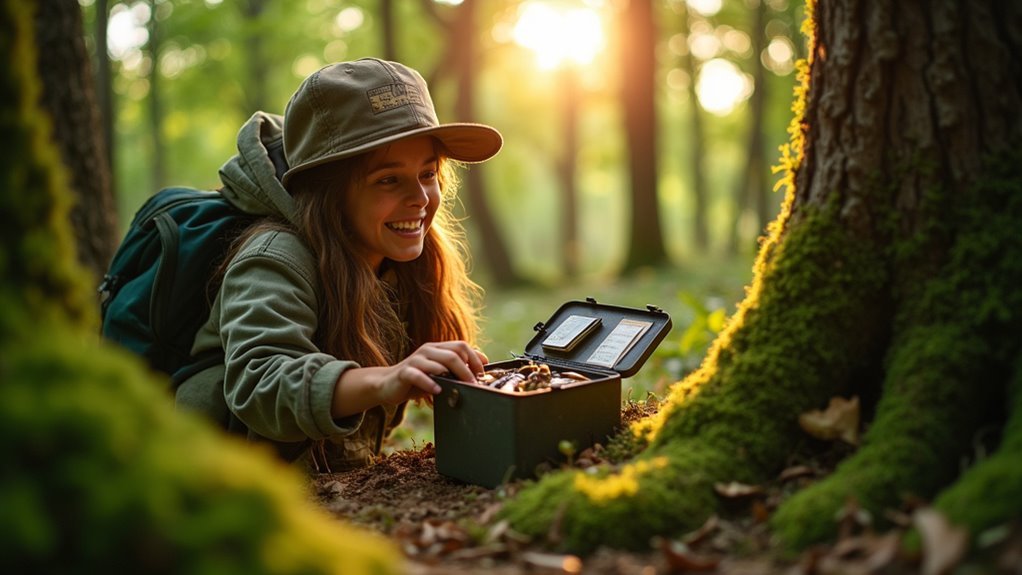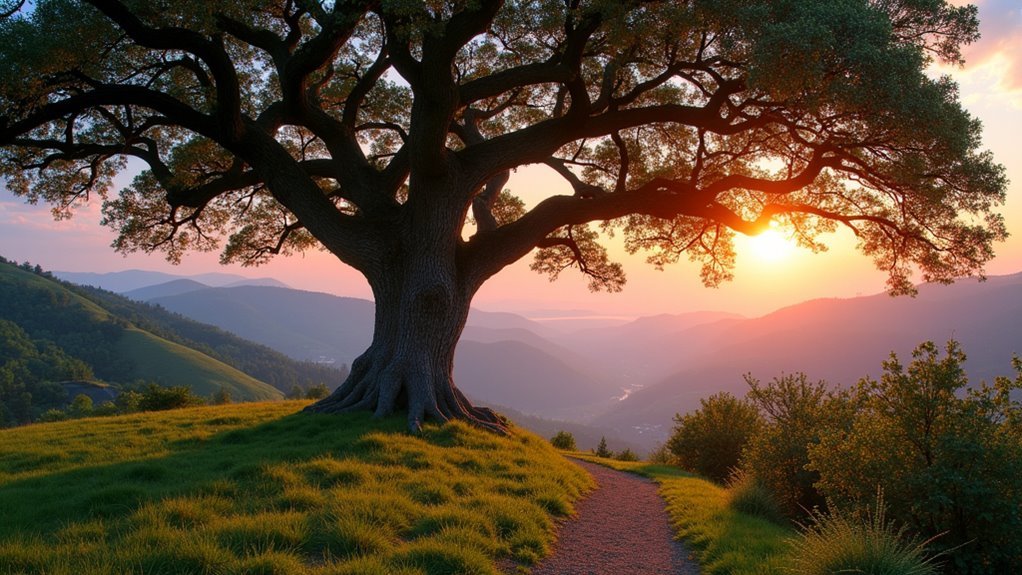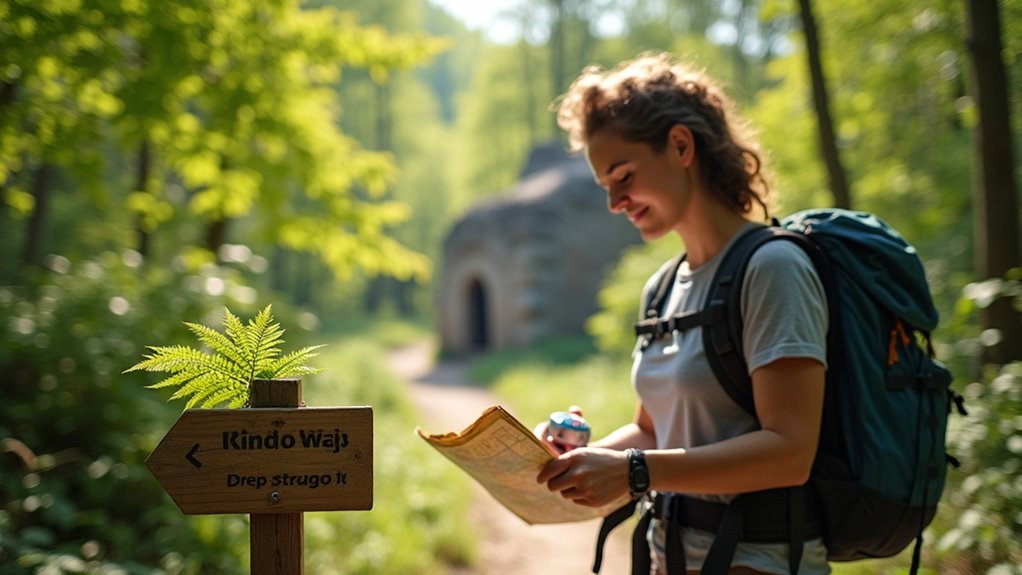Some of the links in this article may be affiliate links. If you make a purchase through these links, we may earn a small commission at no extra cost to you. Thank you.
A great geocache description can transform a forgettable container into an adventure worth pursuing, yet so many cache owners underestimate its power. I’ve seen firsthand how a compelling narrative attracts three times more seekers than bare-bones listings. When you craft your description, you’re not just providing coordinates—you’re telling a story that hooks potential finders and builds anticipation. What if your next hide could become that legendary cache everyone in your local community talks about? The secret might be simpler than you think.
The Purpose and Power of Compelling Descriptions

Why do we spend time crafting geocache descriptions in the first place?
I believe it’s all about enhancing the seeker’s experience.
A compelling cache description does more than just tell someone where to look—it invites them into a story, your story.
When I write a cache description, I’m trying to explain why this spot matters.
Maybe it’s breathtakingly beautiful, historically significant, or just made me smile.
The most powerful descriptions paint a picture of what cachers will see, what they should bring, and why they’ll be glad they came.
I’ve found that breaking text into digestible paragraphs and adding relevant photos transforms an ordinary listing into something people can’t wait to find.
In my experience, it’s this attention to detail that attracts more seekers to your hide.
Elements of an Engaging Geocache Story
Crafting an enthralling geocache story transforms an ordinary hide into an adventure worth seeking.
When writing your description, paint a vivid picture of what makes your location such an interesting spot.
I’ve found that cachers respond best to descriptions that highlight the beauty or uniqueness that inspired you to place your cache there.
Don’t forget to mention what visitors might discover—maybe there’s historical significance or breathtaking views that aren’t obvious at first glance.
If you’ve created a gadget cache or unique container, definitely showcase that theme in your story!
I think the most compelling descriptions also hint at surprises awaiting finders.
Maybe there’s an unexpected vista or a clever twist to your container.
These elements create anticipation that’ll encourage more positive logs and repeat visitors.
Highlighting Location’s Unique Appeal

How often have you arrived at a geocache only to wonder why someone placed it there in the first place? That’s a missed opportunity for what could’ve been a great cache experience!
When I hide caches, I always emphasize what makes the location special.
Maybe it’s a breathtaking vista that changed my perspective, or perhaps there’s fascinating local history most people walk right past.
Geocaching isn’t just about containers—it’s about discovering places that tell stories waiting to be uncovered.
In my experience, the most memorable caches connect seekers to something unique—like that time I described the rare peregrine falcons nesting nearby, and finders started bringing binoculars!
I’ve noticed that when I share why a spot inspired me personally, whether it’s the sunset reflection on an old bridge or the peaceful woodland clearing, people respond with enthusiastic logs and favorites.
Using Mystery and Intrigue to Draw Seekers
The secret sauce of an irresistible geocache description? Mystery and intrigue! I’ve found that hinting at hidden surprises on your cache page creates a sense of adventure that basic descriptions just can’t match. When I incorporate elements of storytelling, seekers feel like they’re setting out on a true treasure hunt—which is what geocaching is all about!
| Mystery Element | Example | Effect on Seekers |
|---|---|---|
| Hidden features | “Look carefully, there’s more than meets the eye” | Encourages thorough exploration |
| Personal inspiration | “This spot changed how I see our city” | Creates emotional connection |
| Required equipment | “Bring something that reflects light” | Builds anticipation |
| Gadget hints | “The container isn’t what you think it is” | Increases puzzle engagement |
Break your text into readable paragraphs, use intriguing language, and you’ll definitely see more visitors!
Balancing Information Without Spoiling the Hunt

Finding the sweet spot between enticing description and preserving the thrill of discovery might be the trickiest part of creating a cache page.
I’ve found that a good cache description gives seekers just enough to get excited without revealing too much.
When I write my cache pages, I follow these principles:
- Focus on general location highlights rather than specific hiding spots
- Keep descriptions concise – under 500 characters for short ones
- Use attributes to indicate conditions without spoiling the hide
- Include photos of the area, not the actual cache container
Incorporating Themes and Personal Connections
I’ve found that sharing my personal story behind a cache creates an instant connection with seekers—like how my childhood hiking spot became the perfect theme for my forest gadget cache.
When you tie your container or mechanism to something meaningful about the location, you’re not just hiding an object, you’re creating an experience that pulls people in.
Trust me, explaining why a spot is special to you (whether it’s historical significance or just somewhere you love) will inspire more visitors to seek out your cache and leave those heartfelt logs we all treasure.
Connect Your Story
When your geocache has a compelling story behind it, you’ll create an experience that goes beyond just the hunt itself.
I’ve found that my most popular hides are ones where I’ve shared why I placed my first geocache in that specific spot.
Think about what made you choose this location—was it a childhood memory, a chance discovery, or a favorite hiking trail?
Weave your personal connection into the description by:
- Explaining what inspired you to hide a cache there
- Sharing a brief anecdote about your own discovery of the spot
- Highlighting what makes this place special to you
- Mentioning any surprises or hidden features seekers might enjoy
Your story creates a shared adventure, making finders feel like they’re part of something meaningful.
Theme Enhances Appeal
Why do certain geocaches attract dozens of visitors while others sit relatively undisturbed?
It often comes down to the theme and personal connection you weave into your description.
I’ve found that incorporating themes—whether it’s your personal inspiration for the hide or a clever gadget concept—helps explain why seekers should visit your cache.
When you share what makes the location special to you, it becomes more relatable and inspiring to others.
Think of your description as telling a story.
Maybe it’s about the beautiful view that moved you, or perhaps it’s highlighting the surprising container seekers will discover.
Photos can really help here too, breaking up text while reinforcing your theme.
In my experience, the most visited caches aren’t just coordinates—they’re experiences with heart behind them.
Location’s Special Significance
The heart of a truly memorable geocache lies in how meaningfully you connect your hide to its location.
When placing a cache, I’ve found that highlighting what makes the spot special transforms an ordinary find into an unforgettable experience.
Maybe it’s a breathtaking view that changed your perspective, or perhaps a historical site that fascinates you.
Share why this place matters to you personally:
- That abandoned railway bridge where you proposed to your partner
- The hidden waterfall you discovered during a difficult time in your life
- A spot where local history intersects with your family’s story
- That quirky urban location that represents something you’re passionate about
I think seekers are drawn to caches that feel like they couldn’t exist anywhere else—locations that tell a story only you could share.
Photography Tips to Enhance Your Cache Page
Have you ever noticed how a cache listing with stunning photos instantly grabs your attention?
I’ve found that high-quality images can truly transform an ordinary listing into something seekers can’t wait to find when they choose your cache.
I recommend using photos strategically throughout your description to break up text – it makes everything more readable and keeps visitors engaged.
Try including location-specific shots that showcase scenic views or (without spoiling) hint at the hide area.
When creating a themed cache, match your images accordingly!
A history-based hide deserves historical photos that immerse finders in your concept.
Don’t forget to share some of your cache photos in the comments section.
The community’s feedback has helped me refine my photography approach over time – and trust me, it makes a difference!
Structuring Your Text for Maximum Readability
I’ve found that text structure can make or break your geocache description’s appeal.
Breaking your text into manageable paragraphs helps seekers quickly scan for essential information, while thoughtfully incorporating visual elements like bold headings or bullet points creates natural stopping points.
When you’re crafting your cache page, remember that white space isn’t wasted space—it’s actually giving your readers’ eyes a much-needed rest between important details.
Breaking Text Effectively
Why does formatting matter so much when crafting a geocache description?
First, it’s about respecting your reader’s time and attention.
When I post a cache, I’ve learned that giant text blocks send seekers running faster than a muggle approaching a search site.
I always break my descriptions into digestible chunks.
Think about how you read online content—you probably scan first, right?
That’s exactly what cache hunters do.
Here’s what works for me:
- Short paragraphs (3-5 sentences max)
- Strategic use of white space between sections
- Bold text for important warnings or hints
- Bulleted lists for required gear or step-by-step instructions
Your goal isn’t to write a novel—it’s to get people excited enough to search for your hide!
Using Paragraph Techniques
Mastering paragraph techniques elevates your geocache description from a jumble of information to a roadmap that guides seekers to your hide. I’ve found that breaking text into digestible chunks makes all the difference in how cachers approach your container.
Make sure you’re limiting each paragraph to 4-5 sentences max. I think of paragraphs as little information packages—each should have one main purpose.
| Paragraph Type | Purpose | Example Length |
|---|---|---|
| Location Info | Navigation details | 3-4 sentences |
| Hunt Context | History/background | 2-3 sentences |
| Hint Section | Subtle clues | 1-2 sentences |
When you structure thoughtfully, readers can scan quickly for what they need. Nobody wants to wade through a wall of text when they’re standing in the woods trying to find your cache!
Incorporating Visual Elements
How do visual elements transform a basic geocache listing into an immersive adventure?
When I created my first hide, I learned that photos aren’t just decorative—they’re essential storytelling tools.
They break up text, making your description instantly more inviting.
Strategic image placement creates a description that’s both engaging and easy to scan. I’ve found that seekers appreciate when I:
- Use location photos to showcase what makes the area special
- Break up long paragraphs with relevant images
- Include themed pictures that match the cache’s concept
- Add attribute icons to highlight important information
Think of your images as breathing room for your text.
You’re not just sharing information—you’re creating a visual journey that builds excitement before they’ve even left home.
Seasonal Updates and Maintenance Notes
As the seasons change, so too should your geocache descriptions to keep seekers informed and prepared. I’ve found that adding a quick note about winter access issues or summer overgrowth helps fellow cachers avoid frustration. It’s something that makes your cache stand out from others that haven’t been updated in ages.
| Season | Maintenance Focus | Visitor Impact |
|---|---|---|
| Spring | Container integrity after thaw | Blooming flora enhances experience |
| Summer | Vegetation management | Highest visitor traffic |
| Winter | Access path clearing | Reduced finds, special equipment needed |
Don’t forget to include recent maintenance check dates in your descriptions. I think showing that you’re actively caring for your cache builds trust. Maybe add some before-and-after photos too? They’re great for showing seasonal differences and honestly, they’ll boost engagement more than you’d expect.
Examples of Standout Descriptions That Drive Traffic
Now that we’ve covered the importance of keeping your cache information fresh, let’s look at what makes a geocache description truly outstanding.
I’ve analyzed some viral examples that consistently attract more seekers, and it’s clear that engaging, personal descriptions win every time.
When crafting your standout description, focus on:
- Highlighting specific, interesting features that make your location special
- Breaking text into readable paragraphs (no one wants to tackle a wall of text!)
- Including personal touches about why the spot inspired you
- Adding complementary photos that showcase the experience
I’ve found that users overwhelmingly prefer descriptions that tell them why they should visit, not just where to look.
When you paint a picture of the experience they’ll have, you’re basically selling an adventure, not just coordinates.
Frequently Asked Questions
How to Write a Geocache Description?
I’ll make my geocache description engaging by sharing why I’ve hidden it, highlighting unique features, mentioning necessary equipment, and adding photos. I’ll keep it concise with GeocacheRhyming for fun appeal.
Is Geocaching Still a Thing in 2025?
Yes, I’m seeing geocaching’s still thriving in 2025! With over 366,600 posts in general discussions and fresh content from just hours ago, the geocaching community maintains its relevance through active forums and continued platform development.
What Are the Three Main Rules of Geocaching?
I’d say the three core principles of geocaching are: register all new caches on the platform, never place caches on private property, and camouflage your hides effectively to prevent muggling by non-players.
How to Hide a Good Geocache?
I’d never believed hiding spots could make such a difference! To hide a good geocache, I recommend selecting unique, accessible locations that aren’t too obvious, while ensuring proper waterproof containers and accurate coordinates.